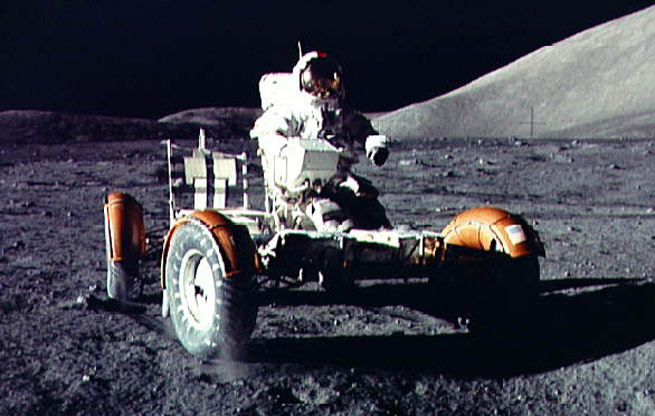 Can you build a better buggy? Or, preferably, a better moonbuggy?
Can you build a better buggy? Or, preferably, a better moonbuggy?
NASA is challenging students around the world to enter the 20th annual moonbuggy race. Registration opened today for the April 2013 event that will be held in Huntsville, Alabama to help inspire creative kids and, just maybe, show some old NASA dogs a few new tricks.
Last year, more than 70 teams competed in the three divisions: high school, college, and university. In total, over 5000 students have competed, with winning teams coming from as far as Canada and Germany.
Participating teams must build a human powered buggy that can carry two students — one female and one male — over a “half-mile simulated lunar terrain course including ‘craters,’ rocks, ‘lava ridges,’ inclines and ‘lunar’ soil.”
 In addition, the moonbuggies must be carried to the starting line by the participating students disassembled in a box with a maximum volume of 4 feet cubed, and be assembled at the start line. Each team gets two runs of the course, and the fastest time of the two runs will be their official time.
In addition, the moonbuggies must be carried to the starting line by the participating students disassembled in a box with a maximum volume of 4 feet cubed, and be assembled at the start line. Each team gets two runs of the course, and the fastest time of the two runs will be their official time.
The real goal is to galvanize more interest in science, according to NASA spokesperson Tammy Rowan.
“That first spark of interest — whether it’s in basic chemistry or astronomy or the history of spaceflight — starts the wheels turning. The Great Moonbuggy Race helps sustain that momentum, turning interest into passion, and dreams into a lifelong pursuit of new answers and new horizons.”
But maybe, just maybe, if we ever get back to the moon, something from one of these designs might show up in a new moonbuggy.
Image credits: NASA
VentureBeat's mission is to be a digital town square for technical decision-makers to gain knowledge about transformative enterprise technology and transact. Learn More

